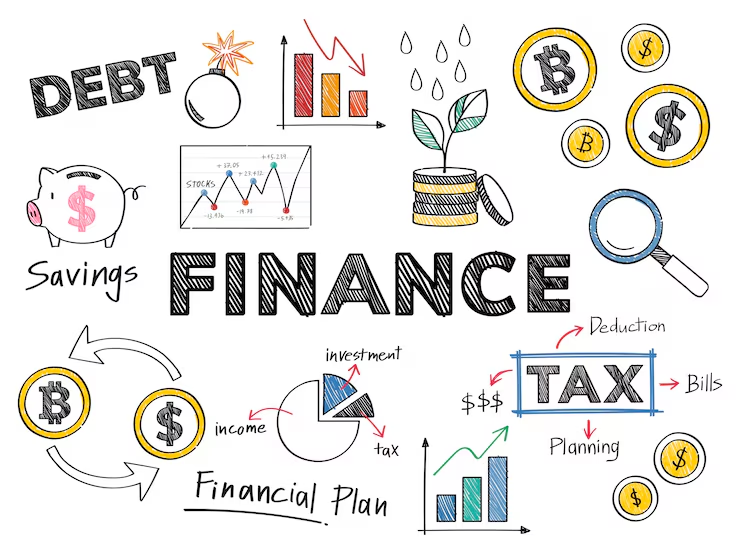Introduction
The global financial system is entering an era of unprecedented transformation. Technological innovation, geopolitical uncertainty, and evolving regulatory frameworks are reshaping how capital flows, risks are managed, and economic growth is pursued. The rapid development of digital currencies, blockchain technologies, and artificial intelligence-driven analytics, combined with persistent global volatility, has created both opportunities and challenges for investors, institutions, and policymakers. Understanding the intersection of innovation, risk, and regulation is critical for navigating the future of global finance.
This article examines the drivers of financial innovation, the emerging risks associated with technological and geopolitical changes, the role of regulation in maintaining systemic stability, and the strategic outlook for the next decade.
Part I: Innovation Drivers in Global Finance
1.1 Digital Currencies and Blockchain
The rise of cryptocurrencies and central bank digital currencies (CBDCs) represents a paradigm shift in how value is stored, transferred, and regulated. Bitcoin, Ethereum, and emerging stablecoins have not only captured investor attention but also challenged traditional banking systems. CBDCs, in particular, promise to streamline cross-border payments, increase financial inclusion, and reduce transaction costs.
Blockchain technology underpins these developments, offering decentralized ledgers that enhance transparency, security, and efficiency. Beyond currencies, blockchain is revolutionizing supply chain finance, trade settlement, and asset tokenization, enabling real-time verification and reducing reliance on intermediaries.
1.2 Artificial Intelligence and Big Data
AI-driven analytics are transforming risk management, credit scoring, and investment decision-making. Machine learning algorithms can process vast datasets to identify patterns, predict market movements, and optimize portfolio allocation. Financial institutions leverage AI to detect fraud, automate compliance, and offer personalized financial products.
Big data also enhances macroeconomic analysis, allowing policymakers to monitor systemic risks in real time. However, reliance on AI introduces new challenges, including algorithmic bias, model opacity, and vulnerability to cyber threats.
1.3 Fintech and the Democratization of Finance
Fintech platforms have lowered barriers to entry for investors and consumers alike. Peer-to-peer lending, mobile banking, and robo-advisors expand access to credit and investment services. Crowdfunding and decentralized finance (DeFi) enable individuals to participate in global markets without traditional intermediaries, creating a more inclusive financial ecosystem.
Part II: Emerging Risks in Global Finance
2.1 Systemic and Market Risks
The integration of technology increases market interconnectivity, which can amplify systemic risks. Algorithmic trading, high-frequency transactions, and automated lending systems may accelerate market volatility. The 2008 financial crisis demonstrated the dangers of underestimating interconnectedness; digital innovations create new, potentially unpredictable channels for contagion.
2.2 Cybersecurity Threats
Digital finance is highly dependent on secure networks and data integrity. Cyberattacks targeting banks, payment systems, or financial infrastructures can have cascading economic effects. Ransomware attacks, state-sponsored hacking, and data breaches present ongoing threats that require sophisticated defensive measures.
2.3 Geopolitical and Regulatory Risks
Geopolitical tensions—trade wars, sanctions, and shifts in global alliances—affect capital flows and investment strategies. Regulatory divergence between jurisdictions can create uncertainty, complicate cross-border transactions, and expose institutions to legal and compliance risks.

Part III: Regulation and Governance
3.1 Global Financial Oversight
International institutions such as the International Monetary Fund (IMF), World Bank, and Financial Stability Board (FSB) play pivotal roles in monitoring systemic risks and coordinating regulatory responses. Their guidance influences capital adequacy, liquidity management, and cross-border supervision, fostering financial stability.
3.2 National Regulatory Approaches
Countries adopt varying approaches to fintech, cryptocurrencies, and digital banking. For instance:
- European Union: Emphasizes consumer protection, anti-money laundering (AML), and ESG compliance.
- United States: Focuses on market integrity and innovation, with regulatory fragmentation across federal and state levels.
- China: Pursues strict digital currency oversight, promoting the digital yuan while regulating private fintech firms aggressively.
3.3 Balancing Innovation and Safety
Regulators face the challenge of fostering innovation while mitigating systemic risks. Sandboxes, pilot programs, and adaptive regulations allow experimentation in controlled environments, enabling growth without compromising financial stability.
Part IV: Strategic Outlook
4.1 Global Financial Centers Competition
Financial hubs such as New York, London, Singapore, and Hong Kong are competing for talent, capital, and technological leadership. The rise of digital assets and cross-border fintech platforms is reshaping the criteria for financial prominence, with innovation ecosystems increasingly central to competitiveness.
4.2 Decentralization and New Financial Architectures
DeFi and blockchain-driven finance challenge traditional hierarchical banking structures. Peer-to-peer transactions, smart contracts, and decentralized exchanges could reduce reliance on central intermediaries, reshaping global monetary flows.
4.3 Emerging Economies and Inclusion
Technology enables emerging markets to leapfrog traditional banking infrastructure. Mobile money in Africa, digital lending in Southeast Asia, and microfinance innovations increase access to credit, stimulating economic growth and reducing inequality.
4.4 Scenario Planning
Three plausible scenarios for global finance over the next decade include:
- Coordinated Innovation: Countries harmonize regulations, adopt digital currencies safely, and mitigate systemic risks collaboratively.
- Fragmented Finance: Regulatory divergence, geopolitical tension, and uneven adoption of technology create segmented markets and financial instability.
- Tech-Led Transformation: DeFi, AI-driven investment, and blockchain dominate, potentially displacing traditional banking models and redefining global financial power.
Conclusion
The future of global finance is defined by the dynamic interplay of innovation, risk, and regulation. Digital currencies, blockchain, AI, and fintech platforms offer transformative potential, democratizing access and improving efficiency. At the same time, systemic, cybersecurity, and geopolitical risks challenge stability, demanding vigilant governance.
Policymakers, financial institutions, and investors must strike a delicate balance: encouraging innovation while protecting markets from volatility, fraud, and systemic collapse. The next decade will likely witness the emergence of a more technologically integrated, globally interconnected, and adaptive financial system. Those who navigate these changes strategically will shape the landscape of global finance for decades to come.
















































